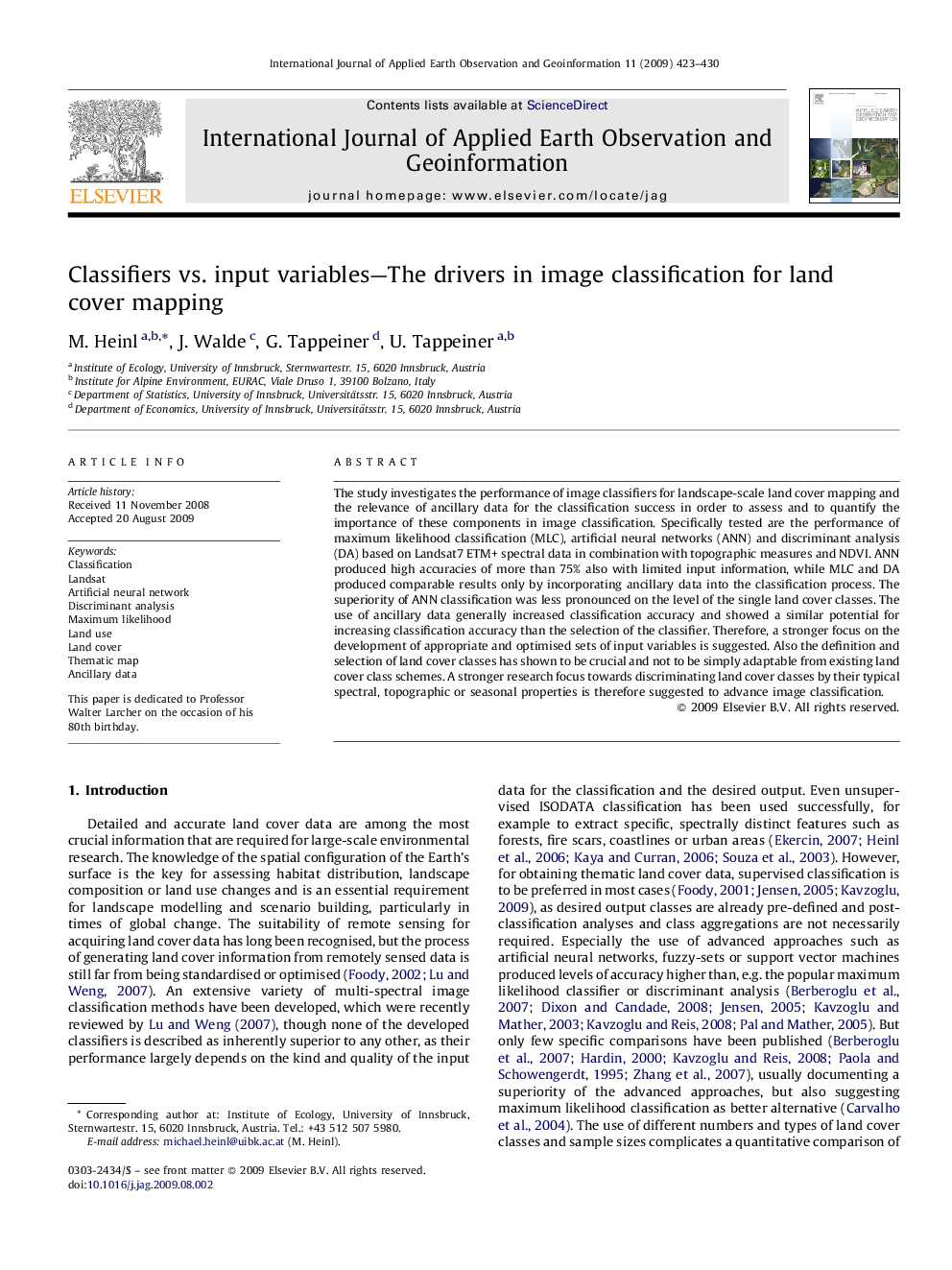| Article ID | Journal | Published Year | Pages | File Type |
|---|---|---|---|---|
| 4465361 | International Journal of Applied Earth Observation and Geoinformation | 2009 | 8 Pages |
The study investigates the performance of image classifiers for landscape-scale land cover mapping and the relevance of ancillary data for the classification success in order to assess and to quantify the importance of these components in image classification. Specifically tested are the performance of maximum likelihood classification (MLC), artificial neural networks (ANN) and discriminant analysis (DA) based on Landsat7 ETM+ spectral data in combination with topographic measures and NDVI. ANN produced high accuracies of more than 75% also with limited input information, while MLC and DA produced comparable results only by incorporating ancillary data into the classification process. The superiority of ANN classification was less pronounced on the level of the single land cover classes. The use of ancillary data generally increased classification accuracy and showed a similar potential for increasing classification accuracy than the selection of the classifier. Therefore, a stronger focus on the development of appropriate and optimised sets of input variables is suggested. Also the definition and selection of land cover classes has shown to be crucial and not to be simply adaptable from existing land cover class schemes. A stronger research focus towards discriminating land cover classes by their typical spectral, topographic or seasonal properties is therefore suggested to advance image classification.
